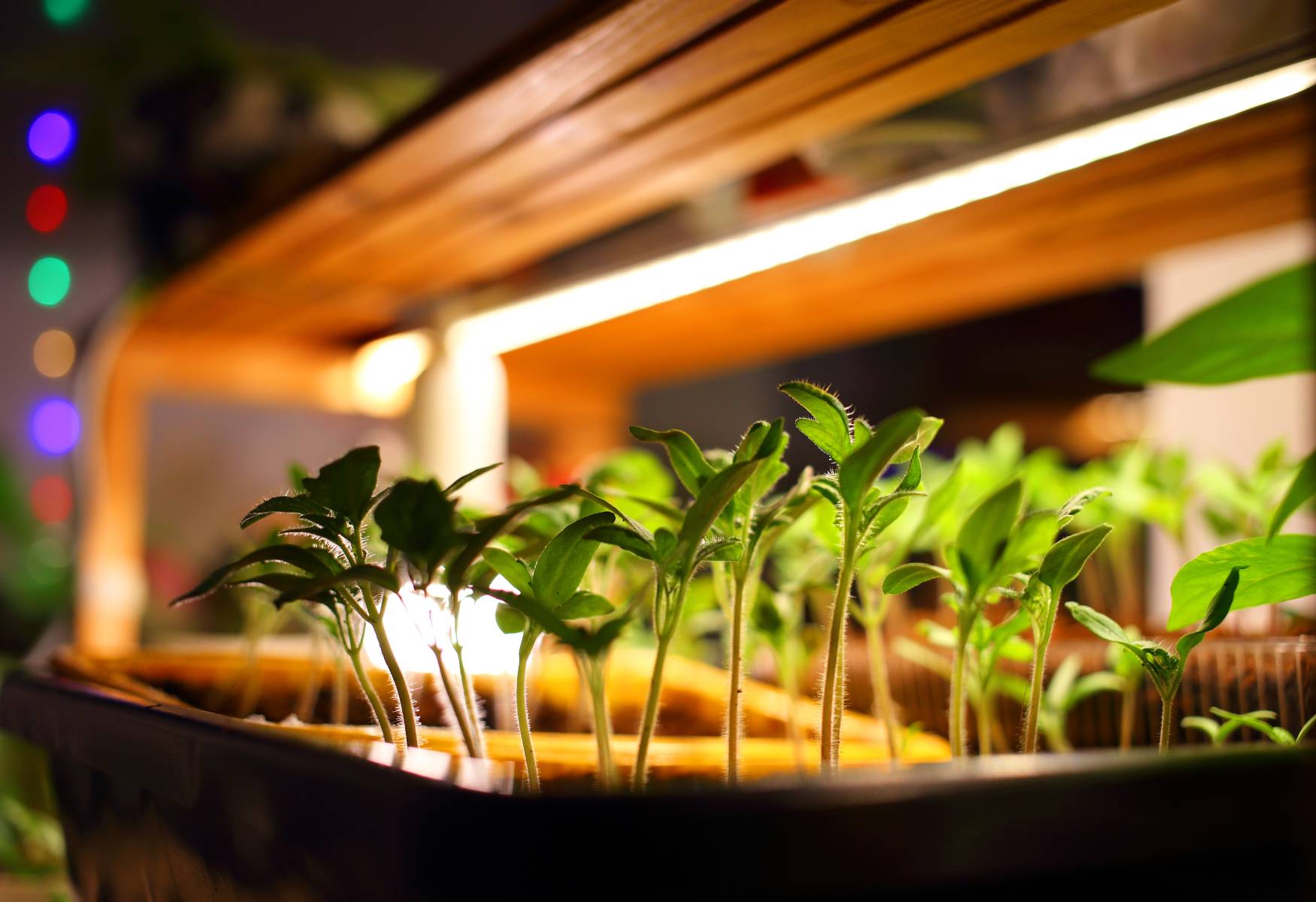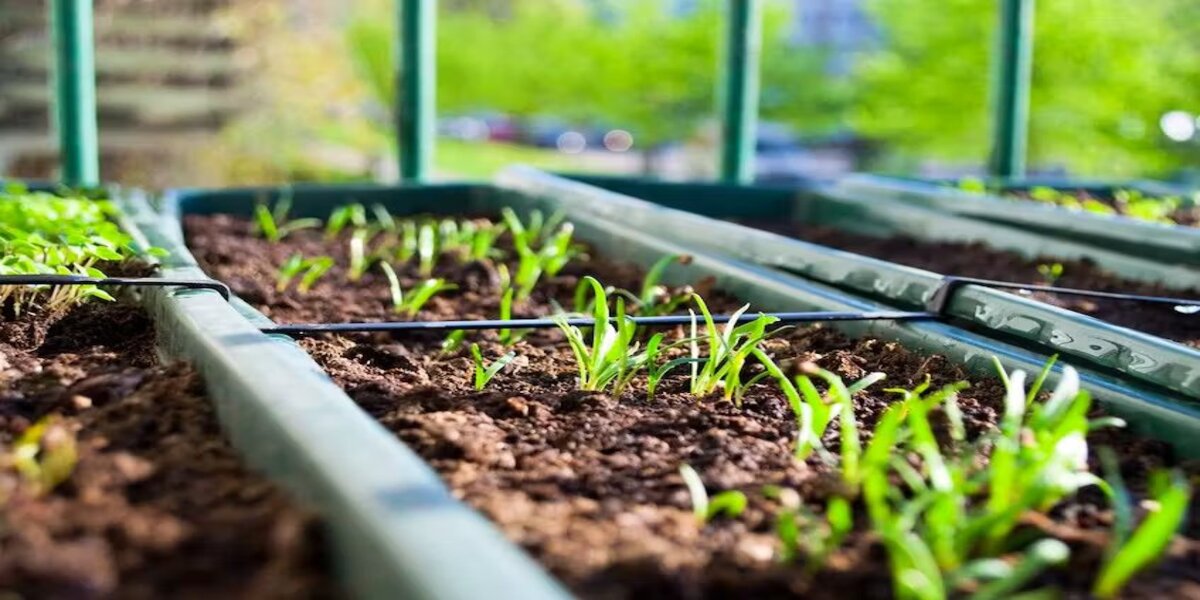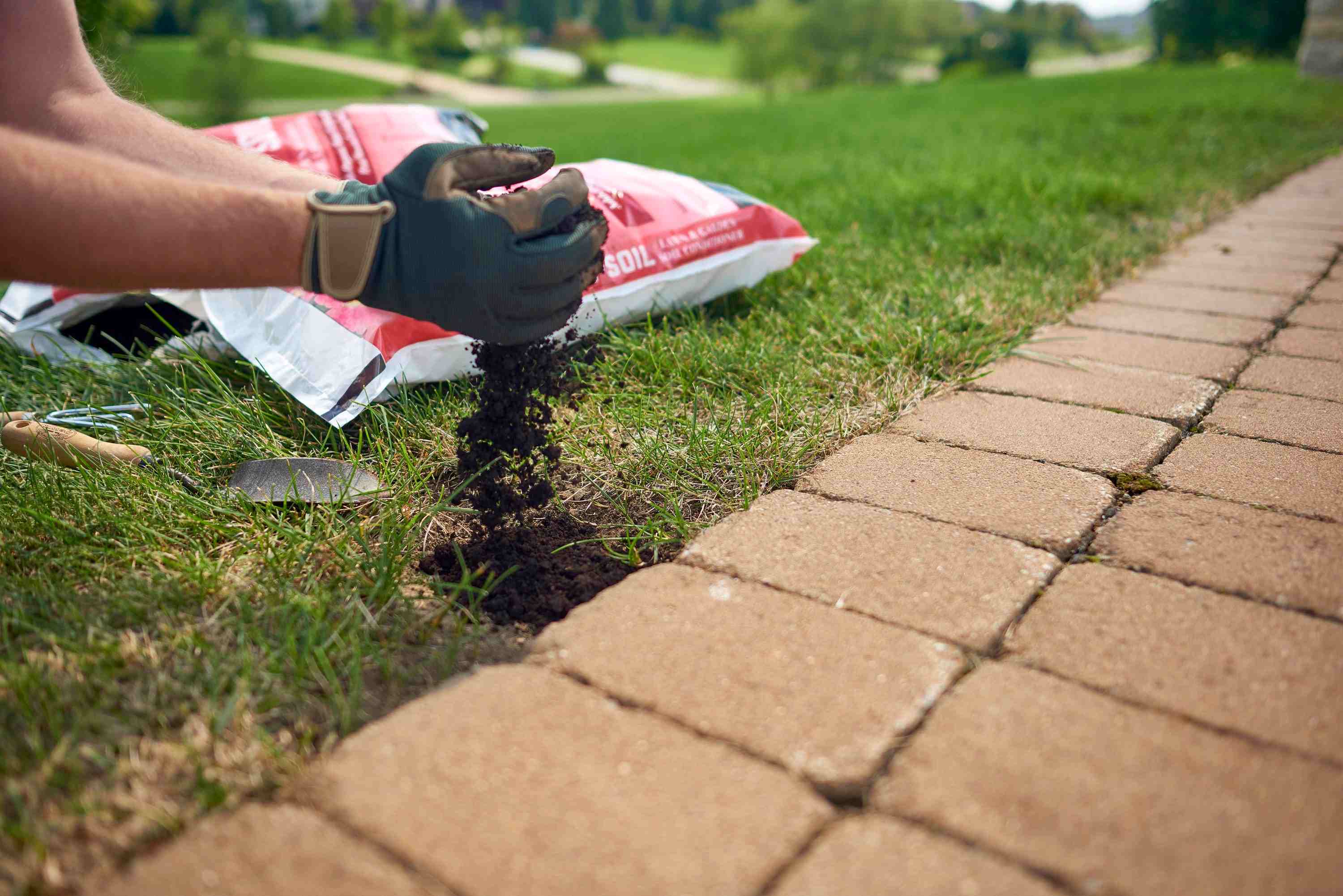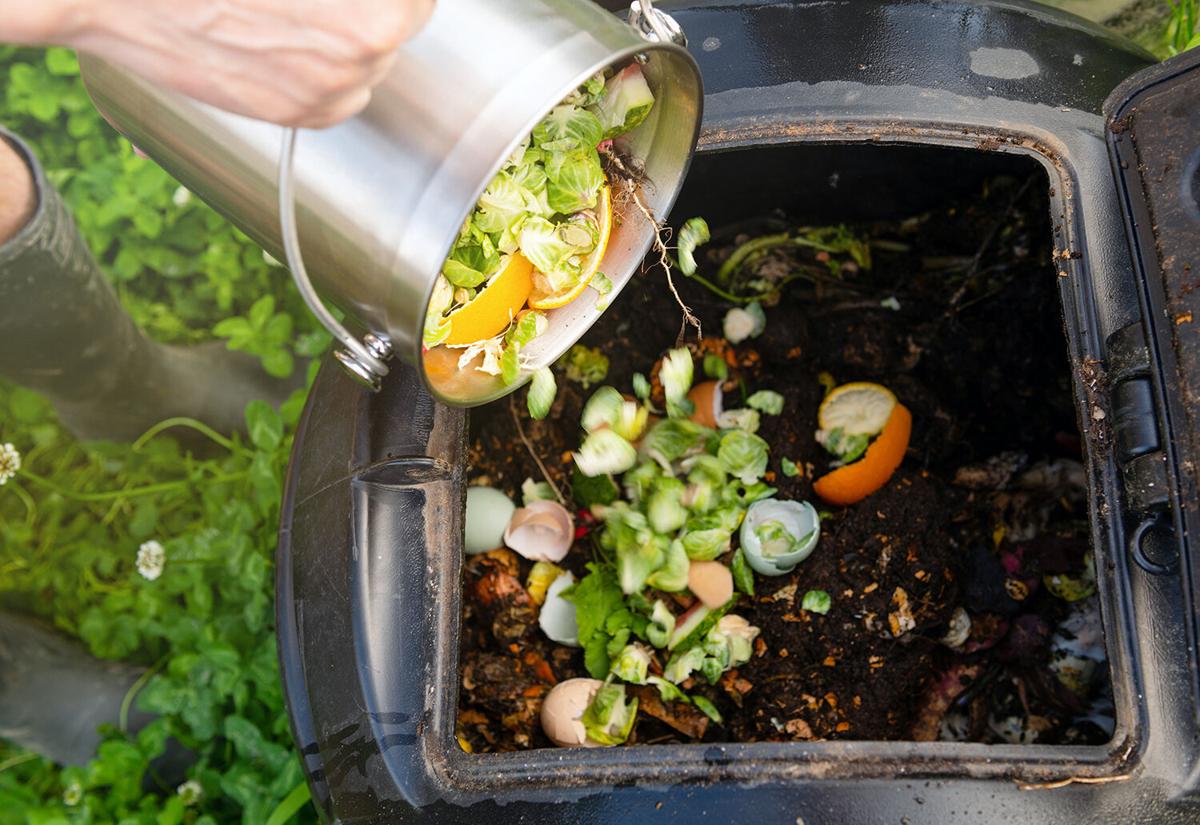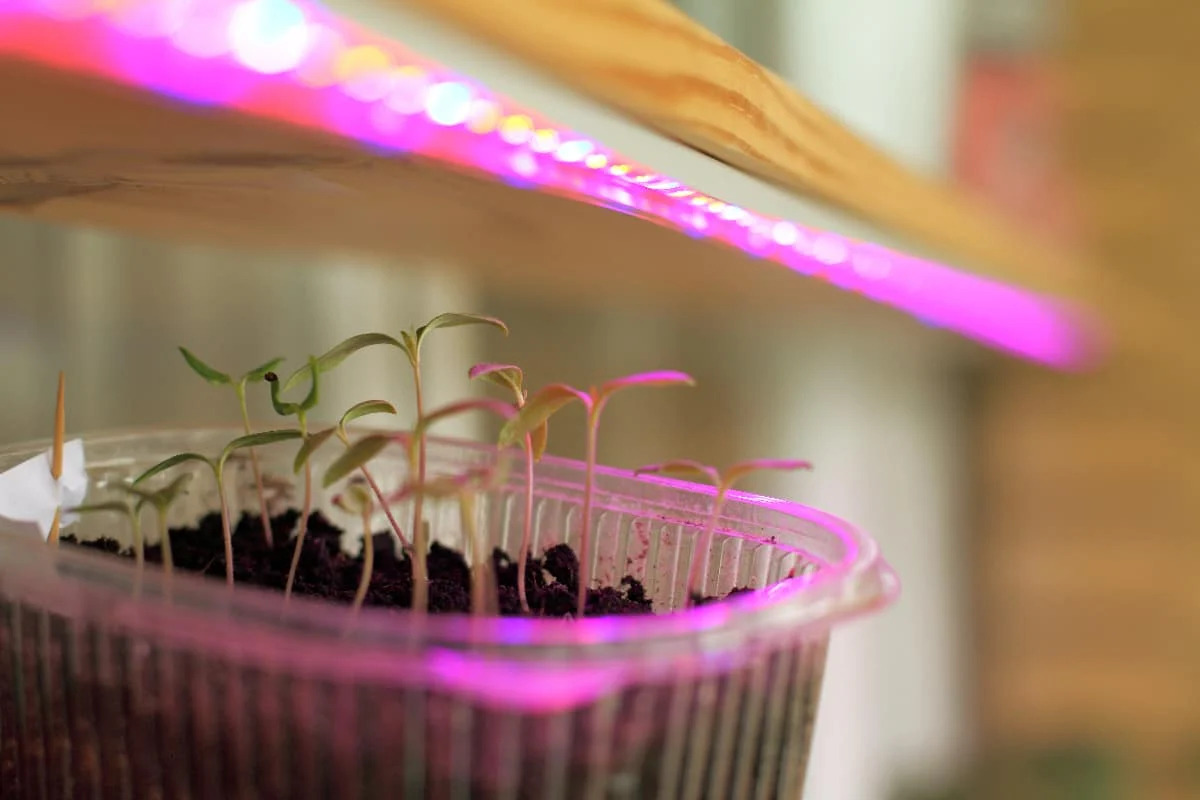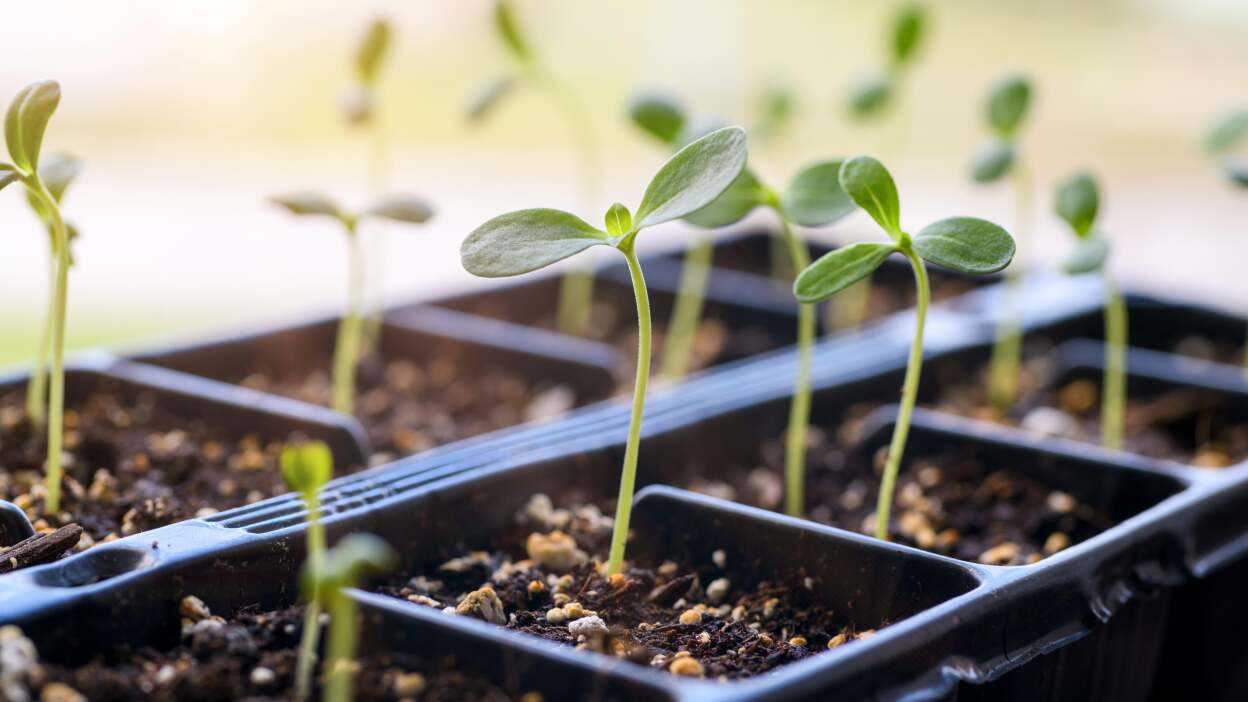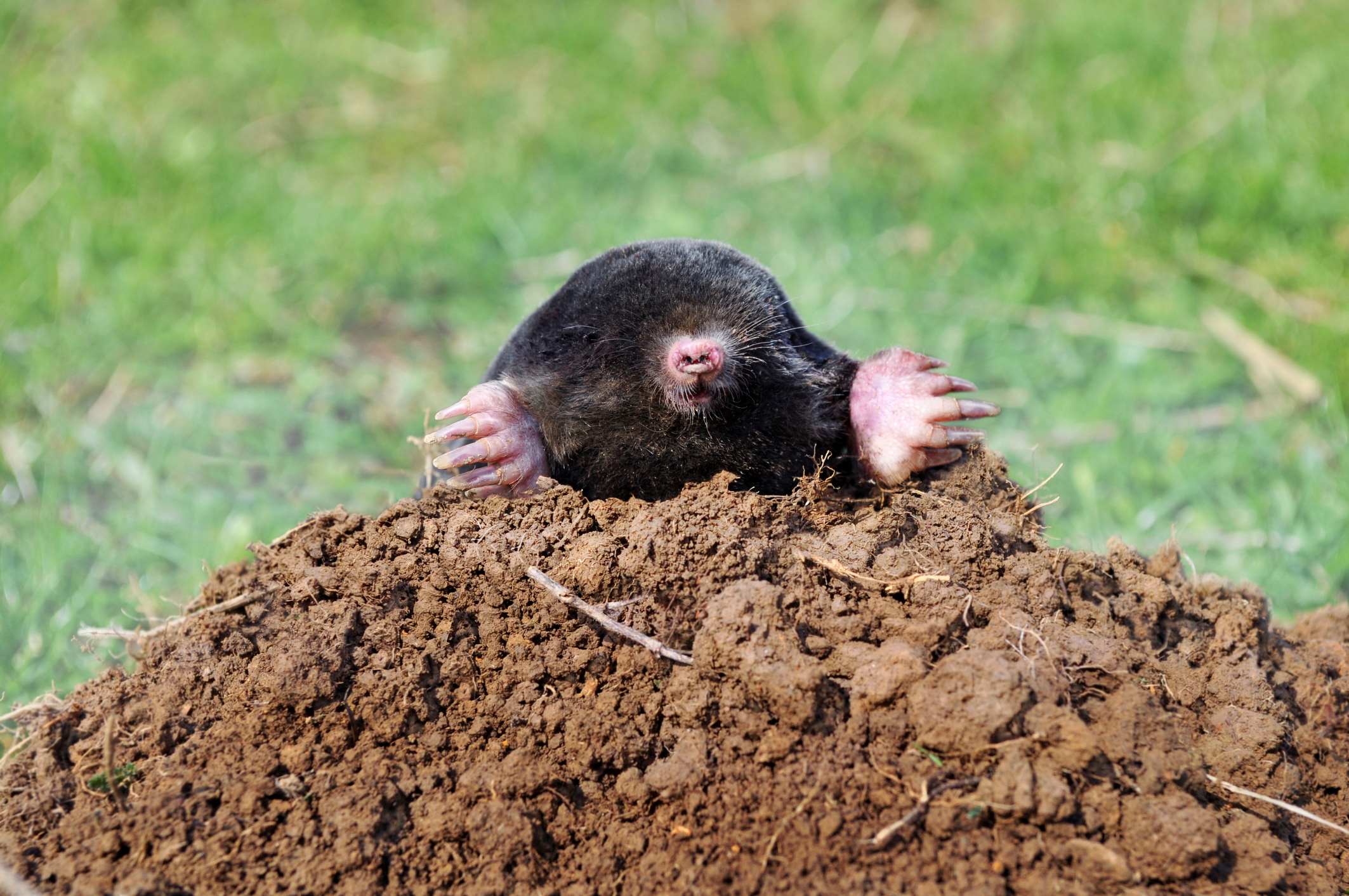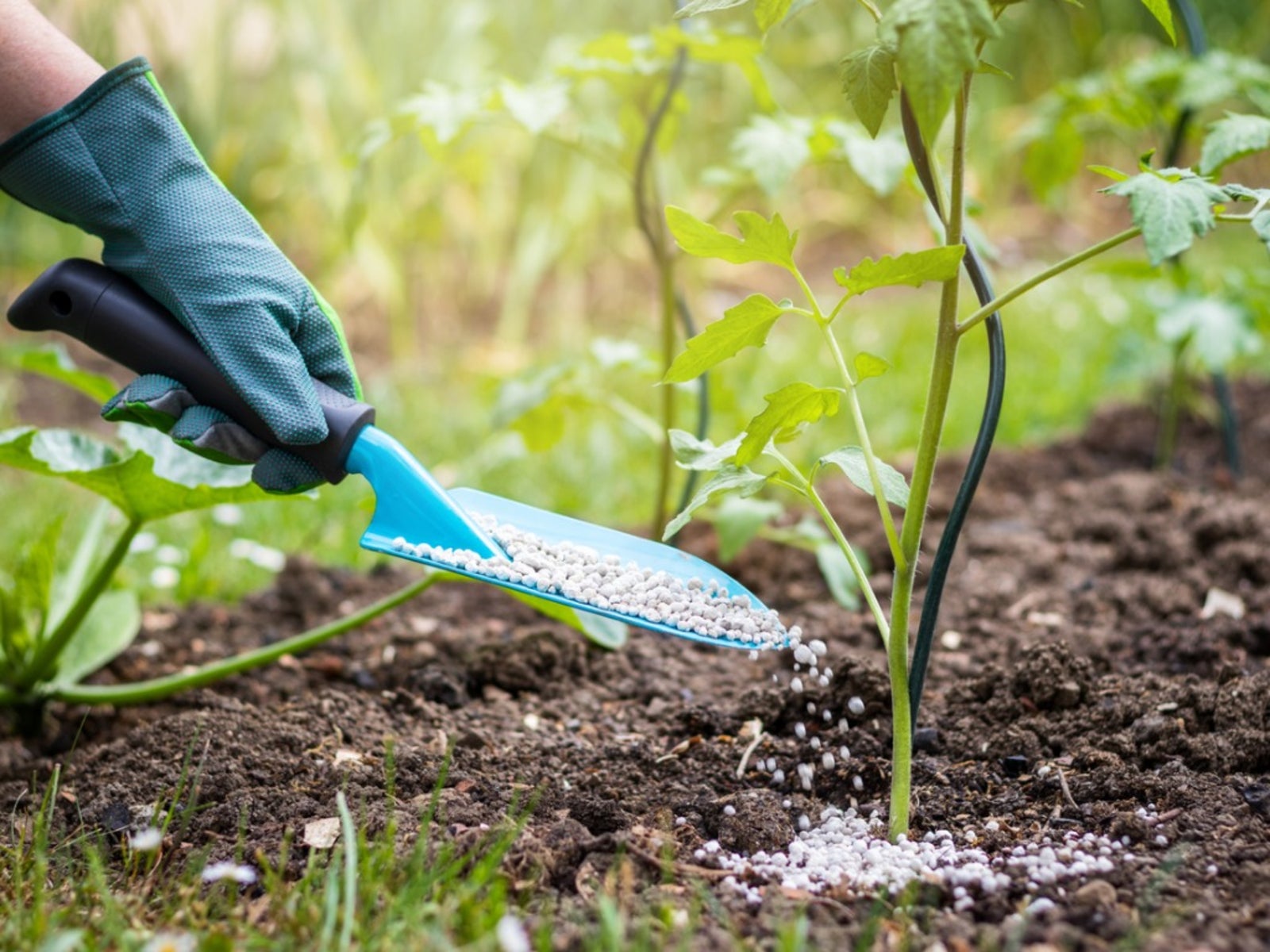Home>Gardening Tips and Tricks>Eco-Friendly Gardening>What To Put In Hole When Planting Tomatoes
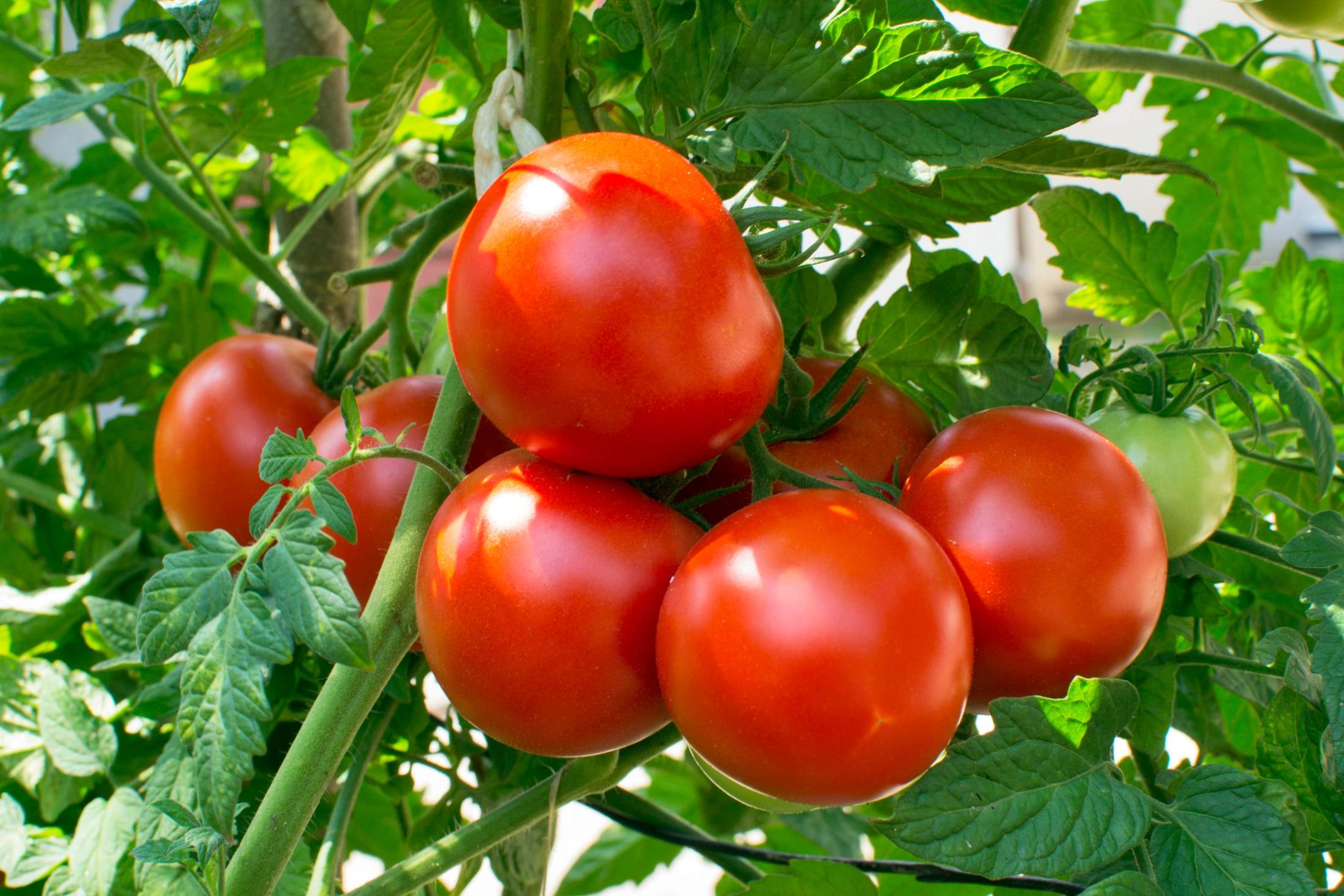

Eco-Friendly Gardening
What To Put In Hole When Planting Tomatoes
Modified: February 10, 2024
Discover eco-friendly gardening tips and learn what to put in the hole when planting tomatoes to ensure healthy growth. Enhance your garden's sustainability today!
(Many of the links in this article redirect to a specific reviewed product. Your purchase of these products through affiliate links helps to generate commission for Chicagolandgardening.com, at no extra cost. Learn more)
Table of Contents
- Introduction
- Why is it important to fill the hole when planting tomatoes?
- Materials needed for filling the hole
- Organic matter options for filling the hole
- Fertilizer options for filling the hole
- Adding amendments to improve soil fertility
- Techniques for filling the hole
- Step-by-step guide to filling the hole when planting tomatoes
- Tips for successful tomato planting
- Conclusion
Introduction
When it comes to gardening, few experiences are as rewarding as growing your own tomatoes. The juicy, flavorful fruits are a staple in many homegrown dishes and a delight to harvest straight from the vine. Whether you’re a seasoned gardener or just starting out, one of the key factors for successful tomato growth is properly filling the hole when planting.
You may be wondering why it’s important to pay attention to the hole where you place your tomato plant. The hole serves as the foundation for your plant, providing essential support, nutrients, and optimal growing conditions. By adequately filling the hole, you create an environment where your tomato plants can thrive and produce an abundant harvest.
In this article, we will explore the various materials and techniques you can use to fill the hole when planting tomatoes. We will also discuss the importance of organic matter and fertilizer for optimal plant growth. Additionally, we will provide a step-by-step guide to help you effectively fill the hole and share some tips for successful tomato planting.
So, whether you’re a green thumb looking to enhance your gardening skills or a beginner eager to start your tomato garden, read on to learn everything you need to know about what to put in the hole when planting tomatoes.
Why is it important to fill the hole when planting tomatoes?
Properly filling the hole when planting tomatoes is essential for the health and productivity of your plants. Here are a few reasons why it is crucial to pay attention to this step:
- Root development: Filling the hole with nutritious soil provides a conducive environment for the roots to establish and grow. Well-developed roots will support the plant’s overall health and enable it to absorb water and nutrients efficiently.
- Moisture retention: A properly filled hole can help retain moisture around the roots, preventing them from drying out. This is especially important during hot summer months when drought stress can negatively impact plant growth.
- Prevention of root diseases: By filling the hole with quality soil and organic matter, you create a balanced and well-aerated root zone. This promotes good drainage and reduces the risk of root diseases such as rot and fungal infections.
- Nutrient availability: Filling the hole with organic matter and amendments ensures that the soil has a rich supply of nutrients. This provides the necessary building blocks for healthy plant growth and abundant fruit production.
- Improved soil structure: Adding organic matter to the hole helps improve the structure of the soil, making it easier for roots to penetrate and access nutrients. It also enhances the soil’s water-holding capacity, promoting better overall plant health.
In essence, filling the hole when planting tomatoes is not a step you want to overlook. It sets the foundation for the entire growing season, providing the necessary support, nutrition, and moisture retention that tomatoes need to thrive. So, take the time to properly fill the hole and give your tomato plants the best start possible.
Materials needed for filling the hole
Before you begin filling the hole when planting tomatoes, it’s important to gather the necessary materials. Here are the key items you’ll need:
- Compost: Compost is a valuable addition to the hole as it enriches the soil with nutrients and improves its structure. Look for well-aged compost that is partially decomposed and has a dark, crumbly texture.
- Organic matter: In addition to compost, you can incorporate other organic materials such as well-rotted manure, leaf mold, or grass clippings. These materials add organic matter to the soil, enhancing its fertility and moisture-holding capacity.
- Organic fertilizer: Choose a slow-release, organic fertilizer specifically formulated for tomatoes. This provides a steady supply of nutrients to support healthy plant growth and fruit development. Look for fertilizers with a balanced ratio of nitrogen, phosphorus, and potassium (NPK).
- Water: Ensure you have a water source nearby or a watering can to moisten the soil as you fill the hole. The water will help settle the soil and ensure good contact between the roots and the surrounding soil.
- Optional amendments: Depending on the quality of your soil, you may consider adding amendments such as lime to adjust soil pH, bone meal for extra phosphorus, or Epsom salt to boost magnesium levels.
- Garden tools: Keep basic gardening tools, such as a shovel or trowel, nearby for easy digging and soil mixing.
By gathering these materials in advance, you’ll be well-prepared to fill the hole and create an ideal growing environment for your tomato plants. Remember, investing time and effort into properly filling the hole will set the stage for a successful gardening season.
Organic matter options for filling the hole
Using organic matter when filling the hole is a fantastic way to improve soil fertility and provide essential nutrients for your tomato plants. Here are some organic matter options to consider:
- Compost: Compost is a versatile and readily available organic matter that helps improve soil structure and provides a slow release of nutrients. It adds beneficial microorganisms to the soil, enhances moisture retention, and promotes healthy root development. Spread a layer of compost in the bottom of the hole before planting your tomato seedling.
- Well-rotted manure: Manure from herbivorous animals, such as cow or horse manure, is rich in organic matter and nutrients. It improves soil texture, adds nitrogen, phosphorus, and potassium, and promotes microbial activity in the soil. Ensure the manure is well-rotted to prevent any potential issues with weed seeds or pathogens.
- Leaf mold: Leaf mold is created by decomposing leaves over time, resulting in a dark, crumbly substance full of beneficial nutrients. It improves soil structure, retains moisture, and adds organic matter. Collect fallen leaves in the autumn, create a compost pile, and allow them to decompose into leaf mold for use in your garden.
- Grass clippings: If you have access to freshly cut grass clippings, they can be a valuable addition to the hole. They break down quickly, providing a source of nitrogen and organic matter. Mix them with other organic materials to avoid clumping and allow for proper decomposition.
- Seaweed: Seaweed is rich in beneficial minerals and trace elements that help improve soil fertility. Rinse off any excess salt and chop the seaweed into smaller pieces. It can be used fresh or dried and added to the hole either as a mulch or mixed with other organic materials.
Remember to mix the chosen organic matter with the soil in the hole, ensuring an even distribution. This will provide a balanced blend of nutrients, improve soil structure, and create a favorable environment for your tomato plants to flourish.
Fertilizer options for filling the hole
In addition to organic matter, using a suitable fertilizer when filling the hole can provide a boost of essential nutrients for your tomato plants. Here are some fertilizer options to consider:
- Organic tomato fertilizer: Look for a specifically formulated organic tomato fertilizer. These fertilizers are designed to provide a balanced blend of nutrients, including nitrogen (N), phosphorus (P), and potassium (K), to support healthy plant growth and fruit development. Follow the recommended dosage on the fertilizer package for optimal results.
- Slow-release organic fertilizer: Slow-release fertilizers are a convenient option as they provide a steady supply of nutrients over an extended period. This helps prevent the risk of over-fertilization and ensures that the plants receive a consistent source of nutrition throughout the growing season.
- Bone meal: Bone meal is a natural source of phosphorus, an important nutrient for root development and fruit production. It can be mixed in the hole before planting your tomato seedling to provide a slow release of phosphorus over time.
- Fish emulsion: Fish emulsion is a liquid fertilizer made from decomposed fish parts. It is rich in nitrogen and other trace elements that promote healthy plant growth. Dilute the fish emulsion according to the instructions on the packaging and apply it to the hole before planting.
- Organic compost tea: Compost tea is a homemade fertilizer made by steeping compost in water. It provides a diverse array of nutrients and beneficial microorganisms that enrich the soil. Use compost tea as a natural liquid fertilizer when filling the hole or as a foliar spray throughout the growing season.
When using fertilizers, it’s important to follow the manufacturer’s instructions regarding application rates and timing. Over-fertilizing can lead to burning the roots and negatively impact plant health. Remember, organic fertilizers work gradually and may require additional applications throughout the growing season, so monitor your plants’ needs and adjust fertilization accordingly.
Consider incorporating a combination of organic matter and fertilizer when filling the hole to provide a balanced supply of nutrients for your tomato plants. This will contribute to their overall health and productivity, resulting in a bountiful harvest.
Adding amendments to improve soil fertility
To further enhance soil fertility when filling the hole for your tomato plants, you can incorporate certain amendments. These amendments help improve the soil’s nutrient content, pH levels, and overall structure. Here are some options to consider:
- Lime: Lime is used to raise soil pH levels if they are too acidic. Most tomato plants prefer a slightly acidic to neutral pH range between 6.0 and 7.0. Adding lime can help balance the pH and create a more favorable environment for nutrient uptake.
- Sulfur: If your soil pH is too alkaline (above 7.0), you can use sulfur to lower it. Sulfur helps acidify the soil and create an optimal pH range for tomato plants. However, it’s important to conduct a soil test before adding sulfur to determine the correct amount needed.
- Epsom salt: Epsom salt, or magnesium sulfate, is a beneficial amendment that supplies magnesium to the soil. Magnesium is crucial for chlorophyll production and overall plant growth. Apply a small amount of Epsom salt to the hole before planting or as a foliar spray during the growing season.
- Bone meal: Bone meal is a natural source of phosphorus, which is vital for root development, flower formation, and fruit production. Incorporating bone meal into the hole can provide a slow-release source of phosphorus, promoting strong and healthy tomato plants.
- Green manure cover crops: Planting green manure cover crops, such as clover or winter rye, in your garden during the off-season can improve soil fertility. These cover crops protect the soil from erosion, add organic matter when they are turned into the soil, and act as natural nitrogen fixers, enriching the soil with this essential nutrient.
Before adding any amendments, it’s important to conduct a soil test to determine the specific needs of your garden soil. This will help you make informed decisions and avoid over-application of amendments. Additionally, remember to follow the recommended rates and guidelines for each amendment to prevent any imbalances or negative effects on plant growth.
By incorporating these amendments when filling the hole, you can maximize the fertility of your soil and create an optimal growing environment for your tomato plants. This will lead to healthier, more productive plants and a plentiful tomato harvest.
Techniques for filling the hole
Filling the hole when planting tomatoes is more than just dumping soil into a void. Employing proper techniques ensures the soil settles well around the roots and creates an optimal growing environment. Here are some techniques to consider:
- Loosen the soil: Before filling the hole, loosen the soil in and around it with a garden fork or a small shovel. This helps break up compacted soil, allowing roots to penetrate easily and promoting better drainage.
- Add organic matter: Begin by adding a layer of organic matter, such as compost or well-rotted manure, to the bottom of the hole. This provides a nutrient-rich foundation for the roots and improves soil structure.
- Mix amendments: If you’re adding amendments like lime, bone meal, or Epsom salt, mix them with the soil or organic matter before filling the hole. This ensures an even distribution of nutrients throughout the hole.
- Backfill gradually: As you backfill the hole, layer the soil mixture around the root ball, gently tamping it down with your hands or a garden tool. Avoid compacting the soil too firmly as this can inhibit root growth and water infiltration.
- Water as you fill: To help settle the soil and eliminate air pockets, water the hole periodically as you fill it. This also helps ensure good soil-to-root contact and aids in the initial hydration of the plant.
- Create a slight mound: To encourage water drainage away from the stem, create a slight mound of soil around the base of the plant. This prevents excess moisture from pooling around the stem, reducing the risk of rot or fungal diseases.
- Apply mulch: Once the hole is filled and the plant is in place, apply a layer of organic mulch, such as straw, wood chips, or dried leaves, around the plant. Mulch helps retain soil moisture, suppresses weeds, and regulates soil temperature.
By utilizing these techniques, you create a well-prepared planting hole that promotes healthy root development, nutrient uptake, and overall plant growth. Take your time to fill the hole properly, ensuring an optimal growing environment for your tomato plants.
Step-by-step guide to filling the hole when planting tomatoes
To ensure optimal growth and productivity for your tomato plants, follow this step-by-step guide for filling the hole when planting:
- Prepare the hole: Start by digging a hole that is deep enough to accommodate the roots of the tomato plant. The hole should be slightly wider than the root ball, allowing room for the roots to spread.
- Loosen the soil: Use a garden fork or shovel to loosen the soil in and around the hole. This helps improve drainage and root penetration.
- Add organic matter: Place a layer of compost or well-rotted manure at the bottom of the hole. This provides essential nutrients and promotes healthy root development.
- Mix amendments: If you’re adding any amendments, such as lime or bone meal, mix them with the soil or organic matter in the hole. This ensures even distribution of nutrients.
- Position the plant: Gently place the tomato plant in the hole, ensuring the root ball is level with or slightly above the soil surface.
- Fill the hole: Backfill the hole with the soil mixture, gradually covering the roots of the plant. Gently firm the soil around the plant, avoiding excessive compaction.
- Water the plant: Water the newly planted tomato thoroughly to settle the soil and provide initial hydration. This helps establish good soil-to-root contact.
- Create a mound: Create a small soil mound around the base of the plant to promote water drainage away from the stem.
- Apply mulch: Finally, apply a layer of organic mulch around the base of the plant. This helps retain moisture, suppress weeds, and regulate soil temperature.
Remember to provide proper support, such as stakes or cages, for your tomato plants as they grow. Additionally, continue to water regularly, especially during dry periods, and monitor the plants for any signs of pests or diseases.
By following this step-by-step guide, you will create an ideal planting environment for your tomato plants, setting the stage for healthy growth and a successful harvest.
Tips for successful tomato planting
Growing tomatoes can be a rewarding and fulfilling experience. To ensure a successful tomato planting, consider the following tips:
- Choose the right tomato varieties: Select tomato varieties that are well-suited for your climate and growing conditions. Determinate varieties are compact and ideal for container gardening, while indeterminate varieties are vining and require staking or caging.
- Start with healthy seedlings: When purchasing seedlings or starting them from seeds, choose healthy plants with dark green leaves and sturdy stems. Avoid plants that show signs of disease or insect damage.
- Plant at the right time: Wait until after the threat of frost has passed and the soil has warmed up before planting your tomatoes. This varies depending on your location, but typically it’s best to plant when the daytime temperatures consistently reach above 60°F (15°C).
- Provide proper spacing: Give your tomato plants adequate space to grow and spread. Plant them at least 2-3 feet apart to allow for air circulation and prevent overcrowding, which can lead to disease and reduced yield.
- Ensure ample sunlight: Tomatoes thrive in full sun, so select a planting location that receives at least 6-8 hours of direct sunlight per day. This promotes healthy plant growth and encourages the development of flavorful fruits.
- Water consistently: Tomatoes require regular and consistent watering. Keep the soil evenly moist, but avoid overwatering, as it can lead to root rot and other problems. Water at the base of the plant to minimize leaf wetness and reduce the risk of foliar diseases.
- Support your plants: Use stakes, cages, or trellises to support your tomato plants as they grow. This prevents sprawling and keeps the fruits off the ground, reducing the risk of disease and damage.
- Practice proper pruning: Remove suckers, which are the shoots that grow in the crotch between the stem and a branch. This directs the plant’s energy towards fruit production and improves air circulation, reducing the likelihood of diseases.
- Monitor pests and diseases: Regularly inspect your plants for signs of pests, such as aphids or tomato hornworms, and take appropriate measures to control them. Also, keep an eye out for common tomato diseases like blight or powdery mildew, and promptly address any issues.
- Harvest at the right time: To enjoy the best flavor, pick tomatoes when they are fully ripe but still firm. This is usually indicated by a vibrant color and a slight give when gently squeezed.
By following these tips, you can maximize your chances of a successful tomato planting. Remember to pay attention to your plants’ needs, provide proper care, and enjoy the bountiful harvest of delicious tomatoes.
Conclusion
Growing your own tomatoes can be a fulfilling and rewarding experience. By paying attention to the crucial step of filling the hole when planting, you create an optimal environment for your tomato plants to thrive. From incorporating organic matter and fertilizer to adding amendments and employing proper techniques, each aspect contributes to the overall health and productivity of your plants.
Remember to gather the necessary materials, such as compost and organic fertilizers, before filling the hole. Consider adding amendments like lime or bone meal to further enhance soil fertility. Implement techniques like loosening the soil, backfilling gradually, and watering as you fill to ensure proper soil-to-root contact and settle the soil around the roots.
Additionally, follow the step-by-step guide provided to ensure you fill the hole correctly. Take note of the tips for successful tomato planting, such as choosing the right varieties, providing ample sunlight and water, and supporting and maintaining your plants through proper pruning and pest control.
By following these guidelines and tips, you will set the stage for healthy tomato plants and a bountiful harvest. Enjoy the satisfaction of growing your own flavorful tomatoes and delight in the taste of your homegrown creations. Happy gardening!

